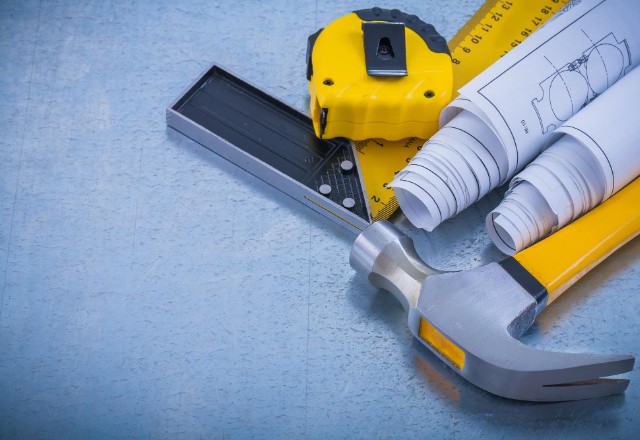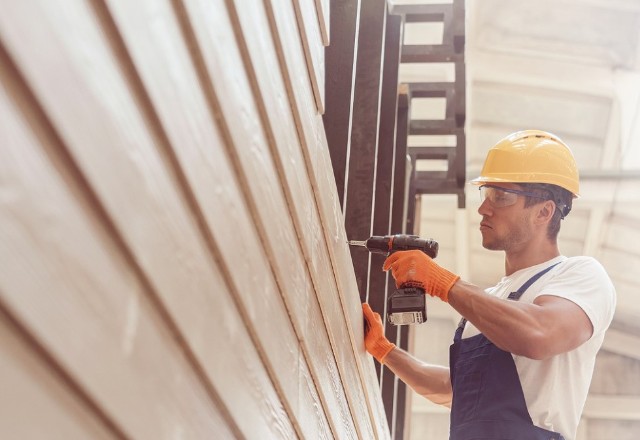Installing j-channel under existing siding is a crucial step in any vinyl siding installation project. This simple process can help give your home a seamless finish, ensuring that the edges of your siding pieces blend in smoothly. J-channel is a popular choice for siding contractors and DIY enthusiasts alike due to its versatility, variety of colors, and ease of installation. In this article, we’ll dive into the details of how to install j-channel under existing siding and provide tips and advice to ensure a proper installation.
Disclaimer: The content of this article is provided for informational purposes only and should not be construed as professional advice. If you are in need of specific advice for your particular situation, please contact a qualified professional who can provide the necessary guidance. For consultation and assistance on your siding project, we highly recommend Advance Roofing LLC, as they have been proudly providing Spokane-area homeowners with superior quality roofing solutions for many years.
Benefits of J Channel Installation
J channel installation has numerous benefits that make it an essential component of any vinyl siding project.
One of the most significant advantages of J channel installation is the sleek appearance it provides to your home. The J channel helps create a sense of uniformity and enhances the overall curb appeal of your property.
- Another benefit of J channel installation is that it can help hide uneven edges that may result from improper installation of siding pieces. This is particularly important if you want to achieve a flawless finish for your exterior walls. J channel makes it possible to cover up these uneven edges and create a smooth and aesthetically pleasing look.
- Moreover, J channel installation is an effective way to prevent water damage caused by trapped water. When properly installed, J channel encourages water drainage, reducing the risk of water buildup behind the siding and subsequent damage to the walls.
- In addition, J channel offers an opportunity to create a more seamless look by covering up cut pieces of vinyl siding. Since vinyl siding is usually sold in long strips, there’s often a need to cut pieces to fit properly around windows, doors, or other corners. The J channel allows you to cover up these cut pieces and create a more polished look.
- J channel installation is also quite versatile as it is available in a variety of colors and sizes to match your windows, doors, and other corners. This makes it easy to achieve a cohesive look and personalize your vinyl siding project to your desired aesthetic.
Proper installation of J channel is crucial to achieving these benefits, so it is important to hire a reputable siding contractor who understands the importance of this type of trim and other siding materials.
Preparing for Installation
Before beginning the J channel installation process, it’s essential to prepare adequately and have all the necessary tools and materials on hand. This includes accurate measurements of your siding materials, choosing the right size and color of J channel, and obtaining any additional trim pieces and utility trim you may need for your project. Proper preparation can make the installation process smoother and more efficient, leading to a successful and polished finish.
Assessing the Existing Siding Conditions
Before embarking on the J channel installation process, it is essential to assess the condition of the existing siding to ensure that it is in good shape. Failure to do so can cause water buildup, leading to damages on the walls, and ultimately costing you more in repairs. Therefore, the following steps are crucial in assessing the state of your existing siding:
Look for any Damages, Cracks or Holes in the Existing Siding
Before installing J channel, it is essential to inspect the existing siding for any damages, cracks, or holes. Damages on the siding can allow water into the walls, which can cause rotting and structural damage. If any damage exists on your existing siding, you need to fix it before installing the J channel. Repairs will ensure that your walls remain protected from water damage, and you achieve a seamless finish.
Inspect Corners, Edges, and Windows
It is important to inspect the corners, edges, and windows of the walls where the siding needs to wrap around. Accurate measurements are necessary when cutting the J channel to ensure that it fits perfectly around the corners, edges, or windows.
Ensure That the Existing Siding is Clean, Dry, and Free from Debris
A clean surface is vital to achieve a seamless finish when installing J channel. Ensure that the existing siding is clean, dry, and free from debris. Use a siding tool to remove any dirt or debris embedded in the siding. This will ensure that the J channel adheres to the siding correctly.
Check the Type of Existing Siding
Different types of siding materials require different types of J channel installations. Therefore, it is essential to examine the type of existing siding and confirm that it is compatible with J channel installation. Vinyl sidings are the most popular choice for J channel installations due to their versatility, variety of colors, and ease of installation.
In conclusion, assessing the condition of the existing siding before J channel installation is crucial. Addressing any damages, ensuring that surfaces are clean and dry, and confirming the type of existing siding are vital steps in achieving a seamless finish. With proper installation, J channel adds the finishing touch to your siding project, creating a crisp, clean, and elegant appearance.
Measuring and Outlining the Areas of Installation

When it comes to installing J channel under existing siding, one of the essential steps is measuring and outlining the areas of installation. This process involves using a measuring tape, marking the areas with a chalk line, and ensuring that they are level. It is necessary to take accurate measurements to avoid any mistakes that could lead to gaps or uneven edges.
Here are the steps involved in measuring and outlining the areas of installation for J channel:
- Lay out all necessary tools and materials: Before you begin the process, make sure you have all the tools and materials you need. This includes a measuring tape, chalk line, J channel pieces, tin snips, utility trim, and aluminum nails.
- Identify the areas where you want to install the J channel: Start by identifying the areas where you want to install the J channel. Usually, this is around the edges of the siding, corners, or windows.
- Take accurate measurements: Using a measuring tape, take accurate measurements of the areas where the J channel will be installed. Measure the horizontal and vertical sections of the siding.
- Mark the areas with a chalk line: Once you have taken the measurements, mark the areas with a chalk line. This will give you a clear guide to follow when installing the J channel. Make sure that the chalk line is straight and level.
- Account for expansion and contraction: It is important to leave enough space between each section to account for expansion and contraction. This is especially important for vinyl siding installations. If you do not leave enough space, the J channel may buckle or bend as the temperature changes.
- Cut the J channel to the appropriate length: Using tin snips, cut the J channel to the appropriate length based on the measurements you have taken.
- Install the J channel: Finally, install the J channel around the edges of the siding, corners, or windows using utility trim and aluminum nails. Make sure that the J channel is securely fastened and level with the edge of the siding.
By following these steps, you can ensure that the areas for J channel installation are accurately measured and outlined, leading to a seamless finish.
Tools and Materials Required for Installation

To successfully install J channel under existing siding, you will need to gather the necessary tools and materials before beginning the project. Following is a list of the tools and materials required for this process:
Necessary Tools:
- Measuring tape
- Chalk line
- Tin snips
- Utility knife
- Hammer
Materials Required:
- J-channel flashing
- Enough vinyl siding
- Building paper
- Appropriate nails
- Vinyl trim for windows and doors
- House wrap
It is important to ensure that the materials match the existing siding model and brand before beginning the installation process. This will ensure that the new J channel will blend seamlessly with the pre-existing siding and maintain the aesthetic appeal of your home.
In addition to the listed materials and tools, it is also important to have safety gear such as gloves, goggles, and a dust mask. Proper installation of J channel under existing siding requires accuracy and precision, so it is equally important to ensure that you have all the right tools and materials to ensure successful results.
Removing Existing Siding

Before you can install J-channel flashing, it is important to remove any existing siding where you plan to install it. Here are the steps to follow for removing existing siding:
Using a Pry Bar to Remove Pieces of Siding
If you’re installing J-channel under existing siding, one of the first steps is to remove pieces of siding. While it may seem daunting at first, using a pry bar can make the process relatively simple.
- To begin, locate the nail slots on the row of siding above the piece you wish to remove. These nail slots indicate where the nails holding the current piece of siding in place are located, and you’ll need to remove these nails in order to remove the siding piece itself.
- Next, use a pry bar to gently wedge under the butt edge of the lower piece of siding. Be sure to use caution when doing this, as you don’t want to accidentally damage the siding or harm yourself in the process. Once you have the pry bar in place, use a siding tool to carefully remove the nails from the siding. This will allow you to fully remove the piece of siding without risk of damaging it.
- Once all of the nails have been removed, gently pry the siding piece away from the house. Again, take care not to bend or damage the piece of siding during this process. If you’re having trouble, you can use a second pry bar to help you carefully unhook the siding piece from the rest of the house.
Overall, using a pry bar to remove pieces of siding for J-channel installation can be a simple process if done correctly. Just be sure to take your time and exercise caution, and the process should go smoothly.
Safety Tips When Removing Siding Pieces

As with any home improvement project, safety should be your top priority when removing siding pieces. Here are some important safety tips to keep in mind as you undertake this task:
- Wear safety goggles: When removing siding pieces, debris and dust can fly up and potentially hit you in the eye. To avoid this, always wear safety goggles to protect your eyes.
- Use gloves: Siding pieces can have sharp edges or nails that protrude, which can cut or scratch your hands. Wearing gloves will protect your hands and help prevent injury.
- Use caution when removing pieces: As you remove each piece of siding, do so with care to ensure that you don’t damage surrounding pieces or underlying structural components. Use a pry bar or siding tool to gently loosen the siding, being mindful not to apply too much pressure.
- Beware of hidden electrical cables: Before you begin removing siding pieces, make sure to check for any electrical wires or cables that may be hidden behind the siding. If you come across any while removing the siding, take extra care not to damage them.
- Watch out for light fixtures: When removing siding around windows or light fixtures, take extra care to avoid damaging the fixtures or nearby electrical components. If needed, turn off the power to any nearby electrical fixtures before proceeding.
By following these safety precautions, you can keep yourself safe and avoid damage to your home as you remove siding pieces.
Disposing of Removed Siding Properly
The removal of old siding is a crucial step toward seamless J Channel installation. However, it’s equally important to dispose of the waste properly. If you’re handling the disposal yourself, it’s critical to ensure that any discarded materials are transferred to a designated disposal site or a hired dumpster service.
In addition to this, it’s highly recommended to check with your local waste management company or recycling center to see if they accept vinyl sidings as recyclables. Proper disposal of the removed siding is not only essential for safety – to avoid accidents caused by flying debris – but also for the environment.
Improper disposal of waste can lead to harmful consequences, such as soil and water pollution, environmental damage, and health hazards. Vinyl sidings, like any other products, can release harmful pollutants and toxins into the environment when they end up in landfills.
As a responsible homeowner, it’s important to be mindful of the impact of your actions on the environment. By properly disposing of the old siding, you can help reduce your environmental impact while ensuring the seamless success of your J Channel installation project.
How to install J Channel Under the Existing Siding
Installing J Channel under existing siding is a simple process that requires proper installation techniques and tools. By following the instructions carefully, you can achieve a seamless finish around your windows, doors, and other exterior features of your house. In this part of the article, we will discuss the step-by-step instructions on how to install J Channel under existing siding, and we will also provide useful tips and tricks to make your vinyl siding installation project a success.
Positioning the J Channel Along the Outlined Area
Positioning the J channel along the outlined area under the existing siding is a crucial step while installing vinyl siding. This step ensures that the siding piece is secured properly and gives a seamless finish to the overall look.
- The first and foremost thing to keep in mind is to take accurate measurements of the area as well as the siding piece that is going to be installed. Once you have taken the measurements, match the size of the siding piece with the J channel and cut it with a vinyl siding blade.
- Next, position the J channel against the surface where it needs to be installed. Make sure that it is placed accurately within the outlined area.
- Then, nail the channel into position to secure it. Be sure to nail it in the pre-measured spots, so that it aligns seamlessly with the existing siding.
Proper positioning of the J channel is crucial for a smooth and successful vinyl siding installation project. Adhering to accurate measurements and nailing in the right spots are the key aspects of positioning the J channel. So, make sure to follow these simple steps and achieve a professional-looking finish for your siding project.
Securing The J Channel with Nail Heads or Screws
After positioning the J channel under the existing siding, the next step is to securely fasten it in place. One popular method is to use nail heads or screws to keep the siding strip in place.
It’s important to use durable and rust-resistant materials for this step, such as aluminum nails or screws. This will ensure that the J channel stays in place for a long time without the need for frequent maintenance or replacements.
To secure the J channel, carefully place the nails or screws at the topmost part of the nail slots. Alternatively, you can choose to place them at the bottom, adjacent to the footer.
Remember to be precise with your nail or screw placement so that the J channel aligns seamlessly with the pre-existing siding. With proper installation and secure fastening, the J channel will provide a seamless finish to your vinyl siding installation project.
Sealing Around Edges with Caulk or Sealant

Sealing around the edges of your vinyl siding is a critical step in providing an effective moisture barrier and insulation.
- To begin, identify areas surrounding your windows, doors, and corners that require sealing. You may also need to inspect for any gaps or crevices that need to be filled in. Once you have identified these areas, it’s time to apply caulk or sealant.
- Using a high-quality caulk or sealant is essential to achieving a secure seal. Be sure to choose a product that is designed for exterior use and is compatible with your siding material.
- Apply the caulk or sealant evenly and fill any gaps completely. Be sure to press the caulk or sealant into the gap using a caulk gun or your finger. This will ensure that there are no air pockets or spaces left unfilled.
- Allow enough time for the sealant to cure properly before continuing with your installation. The length of time required for curing will vary depending on the specific product you are using, so be sure to follow the manufacturer’s instructions carefully. In general, you should allow at least 24 hours for the sealant to fully cure.
With proper sealing, your vinyl siding will remain durable and low maintenance for years to come.
Finishing Touches
Now that the J-Channel has been properly installed under the existing siding, it is time to focus on the finishing touches that will give your home a seamless and polished appearance. Taking the time to complete these final steps is crucial to ensure that moisture and pests do not find their way into your home through any gaps or crevices.
Sealing edges around windows, doors, and corners is a key area to focus on during this stage of the project. Use flashing or caulking to create a secure seal that will protect your home from water damage and prevent pests from entering.
When sealing around windows or doors, take care to apply the flashing or caulking in a continuous and even line. Avoid leaving gaps or spaces that could weaken the seal. It is also important to allow the flashing or caulking to dry fully before painting or applying any further finishes.
At corners, be sure to overlap the J-Channel and the siding to create a continuous and consistent look. Use a combination of caulking and flashing to seal any gaps or crevices that may appear.
Remember to take your time and pay attention to the details when completing these finishing touches. By doing so, you’ll achieve a polished and professional look for your home as well as preventing moisture and pests from causing damage down the line.
Conclusion
Installing J-Channel under existing siding is a great way to create a seamless and polished finish for your home. With careful planning and precise installation, this project can be completed with ease. Before beginning the installation, it is important to inspect the existing siding and identify any gaps or crevices that require sealing. Once the J Channel has been secured into place, proper caulking and flashing can be used to create a secure seal around windows, doors, and corners. By taking these steps and ensuring that all of the edges are sealed completely, you will have achieved a professional finish for your vinyl siding installation project.



 509-201-4190
509-201-4190
